Looking at life differently in Carol Rumens’ challenging poem.
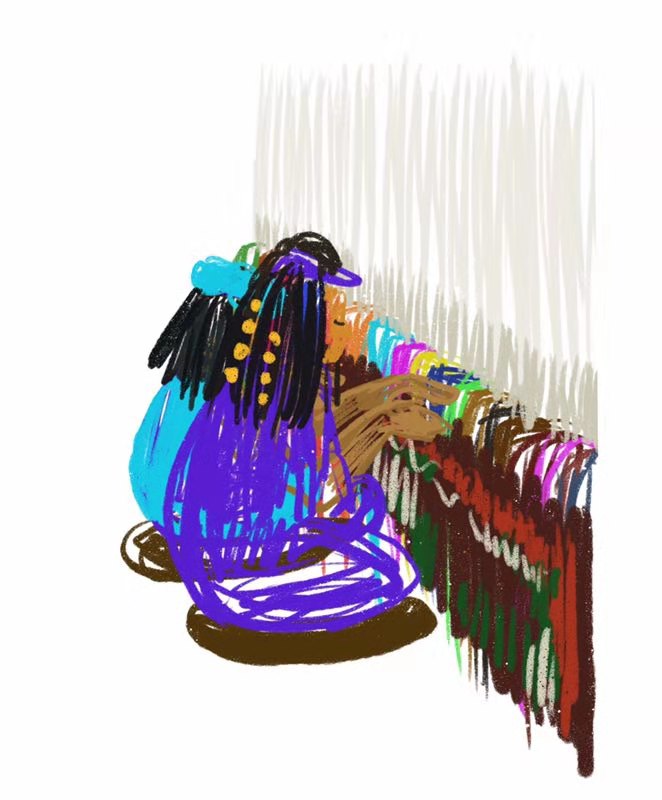
“Rumens has found foreign customs, cultures and languages the source of much poetic inspiration.”
Ben Wilkinson, British Council
Read Carol Rumens’ resume and be struck with the impression that she has done everything it’s possible to do in poetry and then some. Her list of achievements, accolades and publications is as long as my leg. She has written poetry, novels, plays and published writing translated from Russian. It’s impossible to find a single narrative thread in her diverse work. In her early writing she took small-town, even domestic homeliness, as her inspiration, and her poems often told little stories from ordinary life. Perhaps because of this she has been compared to Larkin, a great proponent of parochialism in poetry. However, she travelled widely in Russia and Europe and the scope of her recent bibliography is broad. Her later poetry reveals an abiding interest in foreign languages, different cultures and customs practiced by other people.
The children are at the loom of another world.
Their braids are oiled and black, their dresses bright.
Their assorted heights would make a melodious chime.
They watch their flickering knots like television.
As the garden of Islam grows, the bench will be raised.
Then they will lace the dark-rose veins of the tree-tops.
The carpet will travel in the merchant’s truck.
It will be spread by the servants of the mosque.
Deep and soft, it will give when heaped with prayer.
The children are hard at work in the school of days.
From their fingers the colours of all-that-will-be fly
and freeze into the frame of all-that-was.
Carpet Weavers, Morocco illustrates a very tiny slice of life from a foreign country, and, through slight comparisons with watching television, suggests we balance this against the activities in which many of us might indulge in our own lives. The poem artfully challenges us not bring our own preconceived assumptions to the text, especially mentions of children embroidering a garden of Islam motif onto a carpet bound for a mosque. The poem depicts children hard at work in the school of days; perhaps because of the Moroccan setting, many commentators have read this as a critique of third-world forced child labour. While understandable, a careful reader will see how the language of the poem resists this quick interpretation. For example, students all over the world work hard on hobbies and interests, chores, school projects and the like; hard work is lauded by parents, teachers and the wider community. And don’t unthinkingly equate Morocco with poverty. Like many countries in the world, Morocco’s social and economic situation is complex and open to a variety of representations. Read the lines again, being mindful of the tone of the poem, especially the beautiful image of the children’s assorted heights, and the soft alliteration in the last two lines. Rumens has a deep interest in and respect for other cultures; nevertheless, the ideas which swirl around the poem do include the image of children working in sweatshops mass producing souvenirs for the tourist market – these well-documented instances are emotive and unavoidable.
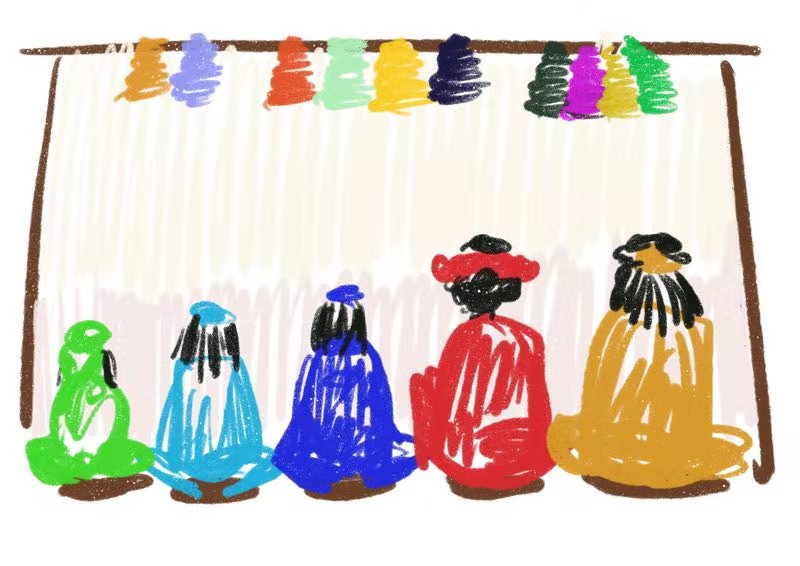
What we can do, though, is approach the poem with as open a mind as possible. Rumens asks us to work through our responses to the scene she presents, and encourages us to explore the many possibilities within. The poem opens by showing us children at the loom of another world. The title made no mention of children, and the word loom has a frightening connotation, so the line may come as a surprise. Try to read it as written: a loom is a device used to weave thread into cloth. The phrase another world positions the children somewhere far away, somewhere ‘other.’ It’s as if the writer is tempting us to make judgements that may or may not hold water. So be patient, and keep reading with that open mind. The second line is best understood denotatively; their dark hair is worn in oiled braids and their clothing is bright. The contrast between black hair and bright clothing is visually appealing, and the next line expresses a visual image in musical terms: their assorted heights would make a melodious chime. If the children are lined up in order of height they would resemble chimes, an instrument that makes an appealing tinkling sound when played.
The second stanza implies a comparison between the children weaving carpets in Morocco and those who might spend their time watching television. The comparison is achieved through a direct simile, like television, and also through the word flickering, which simultaneously suggests the carpet-weavers’ deft skill and the movement of images on a TV screen. The comparison helps us consider who is spending their time more productively; watching television is a passive activity whereas weaving is an active one, ending with the creation of something of which one may be proud. The carpet’s motif is the garden of Islam, which reminds us that the children are part of a wider community; their work is important and will be appreciated once it is finished.
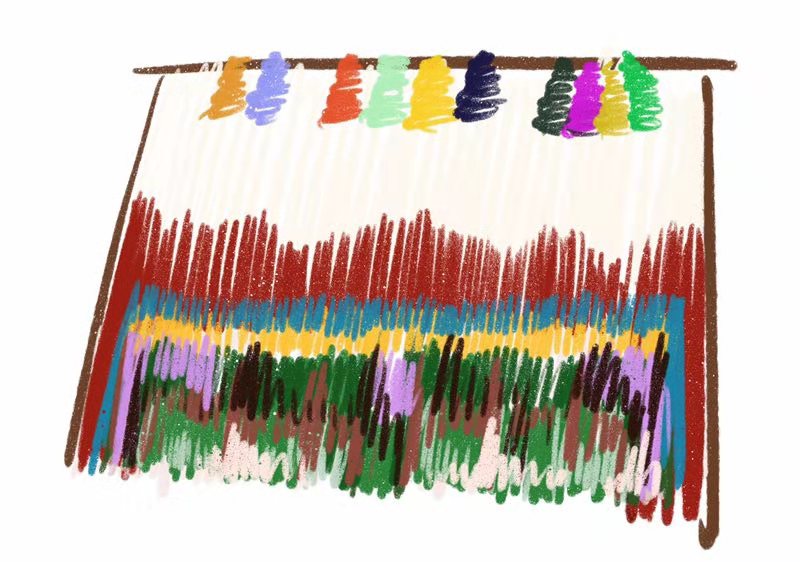
In Islamic literature the ‘garden of Islam’ motif is often used as a metaphor for heavenly paradise. You can legitimately question whether Rumens shows us this motif ironically: the possibility for multiple readings exists. Is Rumens drawing our attention to the hypocrisy of a society in which children are made to work embroidering such patterns onto a carpet? The bench will be raised too is open to multiple understandings. At a simple level, as the carpet gets longer, the workbench on which the children sit must be raised higher so they can continue to work at the same level relative to the growing carpet. Another suggestion, though, is that the children raise themselves higher in the eyes of others through the work that they undertake. It also brings to mind the phrase ‘raising the benchmark,’ implying the work of the children is of the highest quality, and not the tourist tat that fills the markets of Casablanca and Marrakesh.
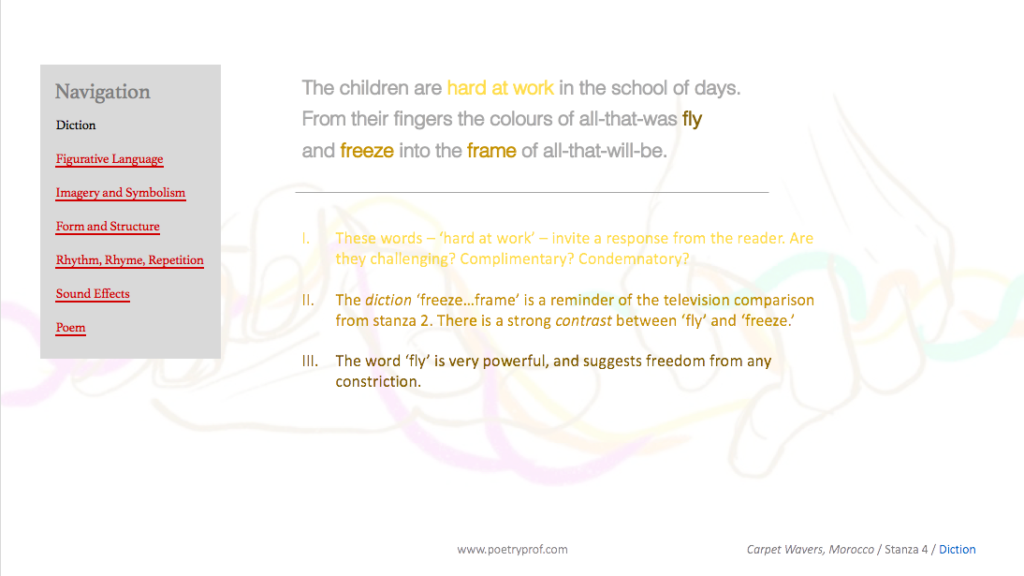
The final line of the stanza describes how, when the carpet is nearly finished, they will lace dark-rose veins into the top of the motif. The choice of the word veins creates the impression that the embroidered art is so real that the patterns seem to have their own life. The next step along the semantic ladder from veins, though, is ‘blood’. Are the children weaving their life’s blood into the carpet? I think this is too much of a stretch. Rather, this might mean the children devote a significant part of their lives to working on the carpet, or figuratively, they commit themselves over many years to their faith and community. The use of the future tense will is also open to interpretation. On one hand, you might say the modal verb suggests a strong sense of purpose in the work; on the other hand, you may feel it means the children have no choice in what they are doing.
The third verse shows how the children’s work benefits the wider community by following the carpet as it is loaded onto a merchant’s truck and taken to a mosque. There it will give when heaped with prayer. Give is polysemic: it means that the carpet is a gift or contribution, and also means ‘yielding,’ communicating how the carpet cushions all those who will come to kneel and pray in accordance with their faith. The modal verb, will, is again important – there is no doubt that the carpet will be used and appreciated; its creation was worthwhile. The poem shows how the carpet passes through a series of hands – the children, the merchant, servants, supplicants – all of whom are servants of their faith. They all belong to a community which they place above themselves as individuals. The tone of the poetry is that of the carpet (deep and soft) created by sibilant and nasal alliteration: loom, dresses, assorted, melodious chime, knots, television, garden of Islam grows, bench, raise, lace, rose veins, merchant, spread, servants, mosque, soft. Rumens blends these sounds skilfully, weaving her poem like the children at the loom. She draws other parallels between the weaving of the poem and the weaving of a carpet through form. Each stanza is three lines long and each line (save the last couplet) is end-stopped, reminiscent of the careful and precise geometric patterns on a hand-woven carpet.
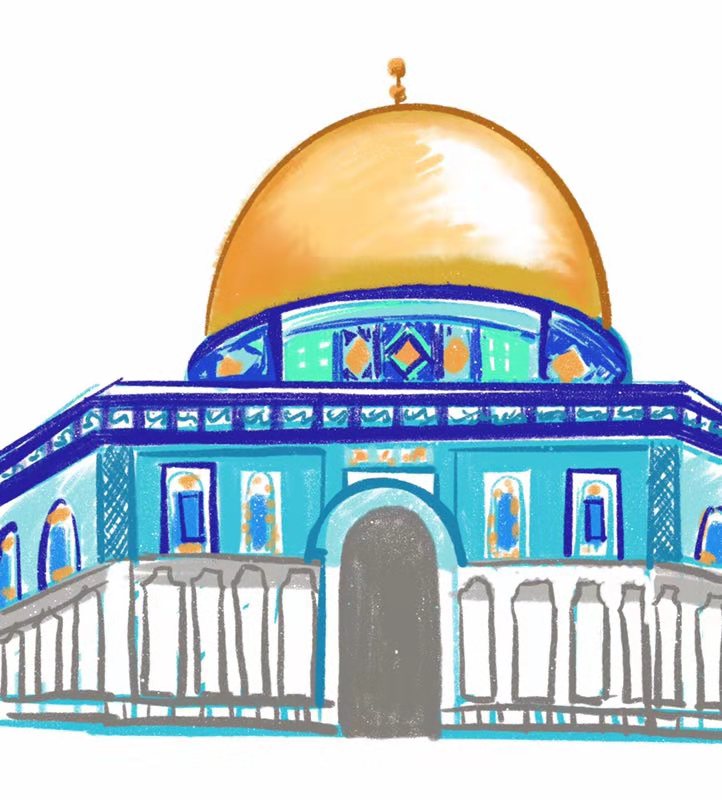
The final stanza returns our focus to the children with the contentious line: “The children are hard at work in the school of days.” It is hard not to feel that the children really should be in school rather than working at carpet-weaving. Again, it requires the reader to consider how the values of a different place might jibe with our own sense of what is ‘right’ and what people ‘should’ be doing. The poem has already shown how the children have played an important role in their community. Reverse the position and it could be argued that children are less valued if they were shut away all day at school. Is school of days meant to remind us of the phrase ‘school of life’? Those who say they have ‘graduated from the school of life’ often do so with pride, as if they have learned valuable lessons by taking the road less travelled.
The final two lines are the only lines in the poem not end-stopped, and this helps free them from the formal requirements of the poem. If you thought the children were ‘trapped’ in their lives, the energy and buzz of the ending demands a rethink. Underscored by soft ‘F’ alliteration – from, fingers, fly, freeze, frame – the words positively sing from the page (that melodious chime again). There is a faint reminder of the television comparison through the diction freeze/frame. For me, the key word that you need to debate is fly. On the one hand it might be associated with ‘escape’ as in fly to freedom. On the other, it might suggest ideas such as ‘possibility’. To begin with the children seemed passive (the children are at the loom); by the end of the poem they are responsible for the creation of all-that-was and all-that-will be. The children’s achievement transcends the limits of the carpet and moves into the metaphorical, even mystical, realm. Imagine all those rainbow colours flying out of the children’s fingertips, overflowing from the carpet and weaving the very future fabric of the world.
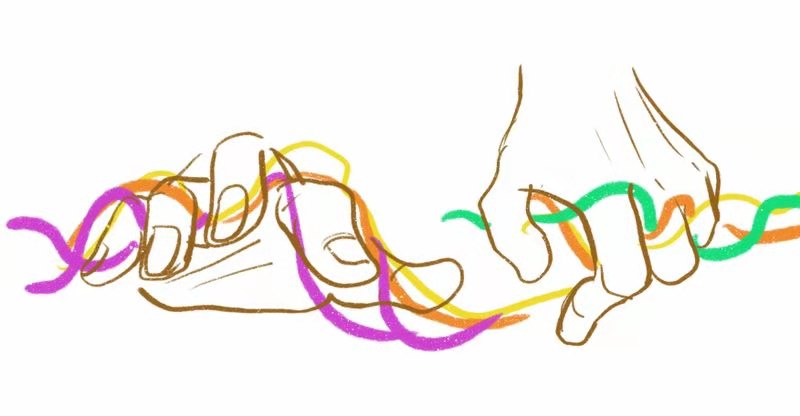
It’s easy to resist this interpretation of the poem because the idea of children labouring on a carpet rather than, say, working at school is so emotive. I’m certainly not arguing that the poem doesn’t present a challenge. For example, after all the beautiful images and descriptions of the carpet, there is still a reminder here that the close religious community in the poem involves the work of children. What I would urge any reader to do is work through your ideas about the poem and see if they can be argued persuasively using evidence from the text. The way poetry is open to different readings is one of its greatest pleasures; discovering two people have read the same thing and have come to different conclusions can stimulate a great discussion. So don’t be afraid to disagree – just remember to keep an open mind towards other ideas Carol Rumens might be suggesting.

Suggested poems for comparison:
The Chimney-Sweeper by William Blake
The less famous of two poems by Blake with the same title. Set against the background of child labour in the late 18th and early 19th centuries, and personally distraught by the practice of sending children up chimneys in Victorian England, Blake wrote this scathing criticism of children at work in his collection Songs of Innocence and Experience. You can find the companion-piece (from Songs of Innocence) here.
Seven Birds by Mohammed Bennis
If you want to read poems about Morocco by poets from Morocco, try Mohammed Bennis. Called one of the most important poets writing in Arabic, this poem (about seven birds of different symbolic colours) has been translated into English.
Additional Resources
If you are teaching or studying Carpet Weavers, Morocco at school or college, or if you simply enjoyed this analysis of the poem and would like to discover more, you might like to purchase our bespoke study bundle for this poem. It’s only £2 and includes:
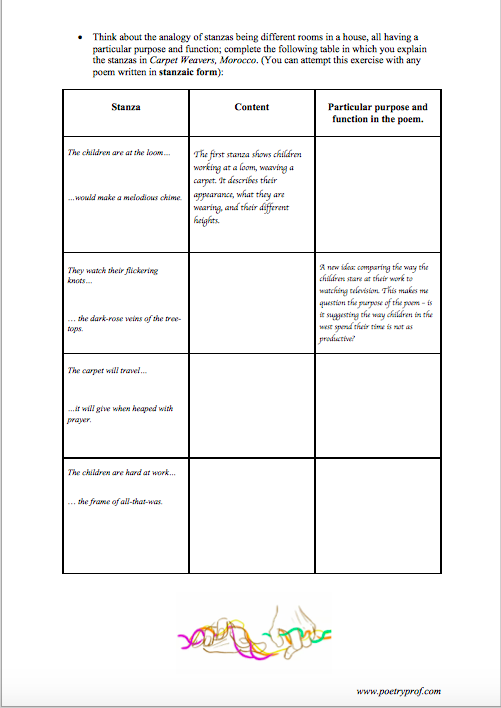
- 4 pages of activities that can be printed and folded into a booklet for use in class, at home, for self-study or revision.
- Study Questions with guidance on how to answer in full paragraphs.
- A sample Point, Evidence, Explanation paragraph for essay writing.
- An interactive and editable powerpoint, giving line-by-line analysis of all the poetic and technical features of the poem.
- An in-depth worksheet with a focus on stanzaic form.
- A fun crossword quiz, perfect for revision or a recap lesson.
- 4 practice Essay Questions – and one complete model Essay Plan.
And… discuss!
Carpet Weavers, Morocco is certainly a challenging poem. What did you think when you first read it? Do you think Rumens is criticising the fact that the carpets are woven by children? Or did you find her ideas a little more ambiguous? In what ways did the poem challenge you? Why not leave your responses and ideas in the comments section below. And, for daily nuggets of analysis and all-new illustrations, don’t forget to find and follow Poetry Prof on Instagram.
thank you for this it kind of saved my life